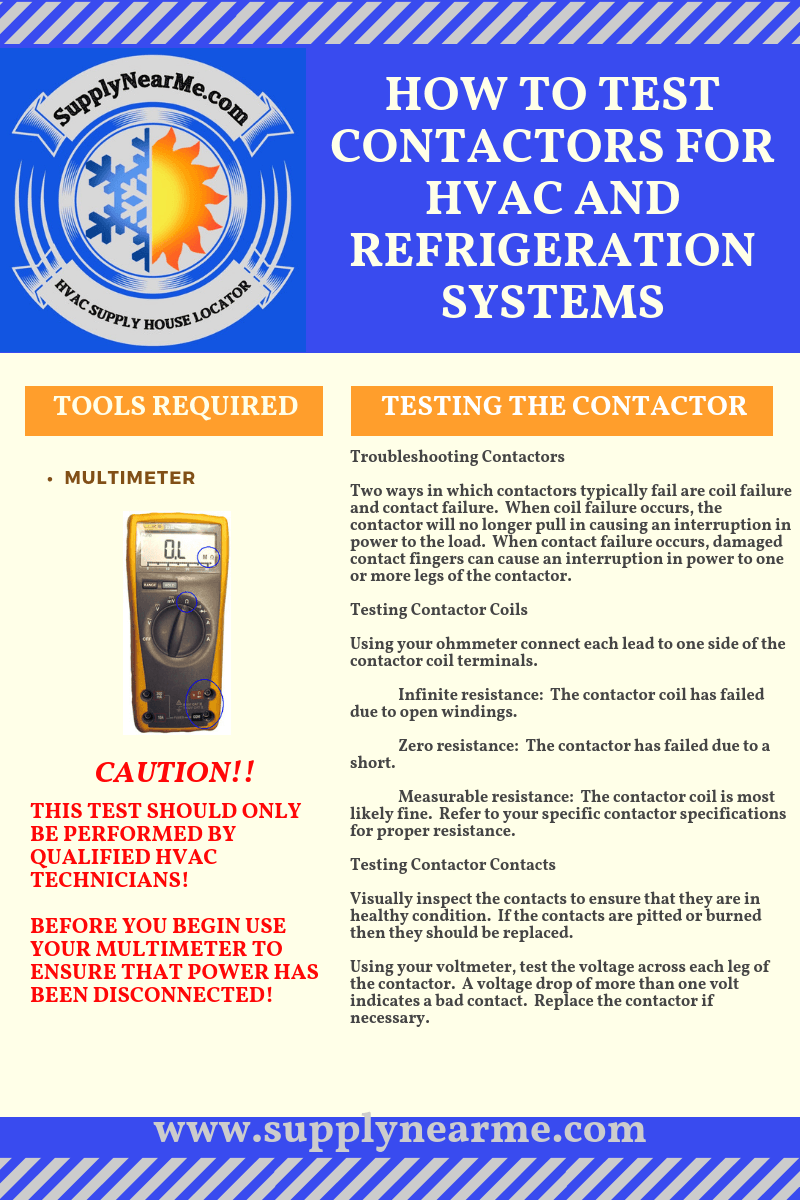How to Test Contactors for HVAC and Refrigeration Systems
This test should only be performed by qualified HVAC technicians! Before you begin use your multimeter to ensure that power has been disconnected!
 What is a Contactor
What is a Contactor
Contactors are used in both residential and commercial HVAC units as a means of energizing or de-energizing a load (usually a fan motor or compressor). Contactors are electrically controlled switches which use low voltage power to control high voltage/high amperage loads. A contactor consists of a coil that when energized creates a magnetic field around a laminated core. This magnetic field is used to pull the contacts closed, applying power to the load. Springs are used to open the contacts when the magnetic field is de-energized.
The coils of a contactor are energized by the control voltage of the system. This voltage is typically 24, 120, 208/230, or 460 volts. When replacing a contactor, it is important to select the correct control voltage to match what is currently installed.
Troubleshooting Contactors
Two ways in which contactors typically fail are coil failure and contact failure. When coil failure occurs, the contactor will no longer pull in causing an interruption in power to the load. When contact failure occurs, damaged contact fingers can cause an interruption in power to one or more legs of the contactor.
Testing Contactor Coils
Using your ohmmeter connect each lead to one side of the contactor coil terminals.
Infinite resistance: The contactor coil has failed due to open windings.
Zero resistance: The contactor has failed due to a short.
Measurable resistance: The contactor coil is most likely fine. Refer to your specific contactor specifications for proper resistance.
Testing Contactor Contacts
Visually inspect the contacts to ensure that they are in healthy condition. If the contacts are pitted or burned then they should be replaced.
Using your voltmeter, test the voltage across each leg of the contactor. A voltage drop of more than one volt indicates a bad contact. Replace the contactor if necessary.



























































































